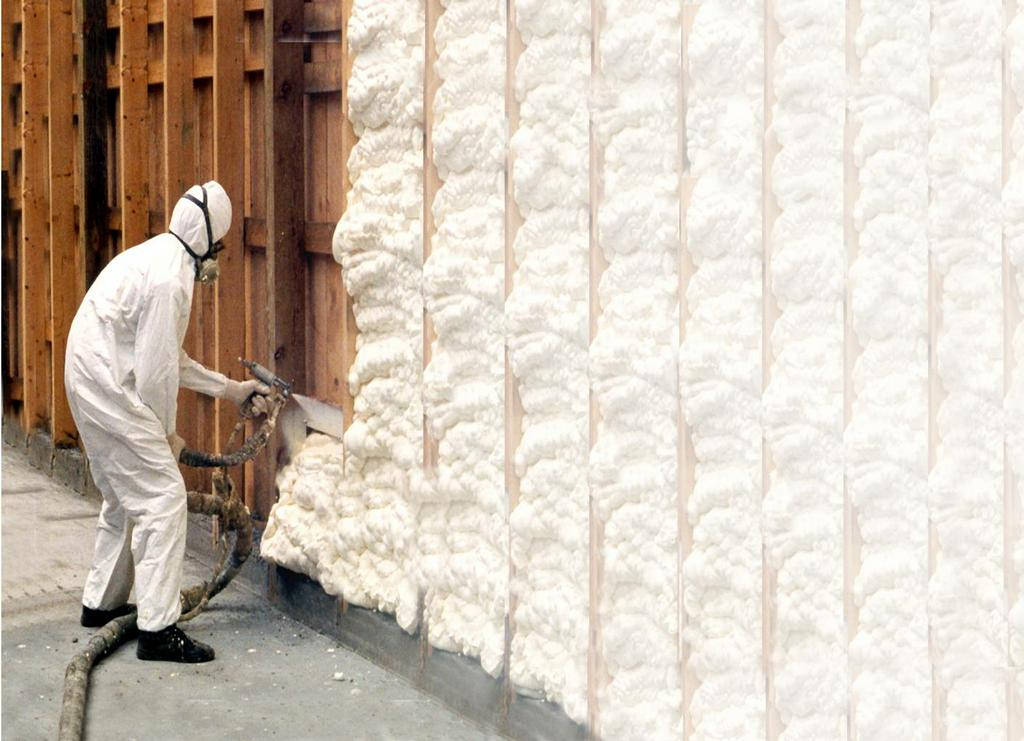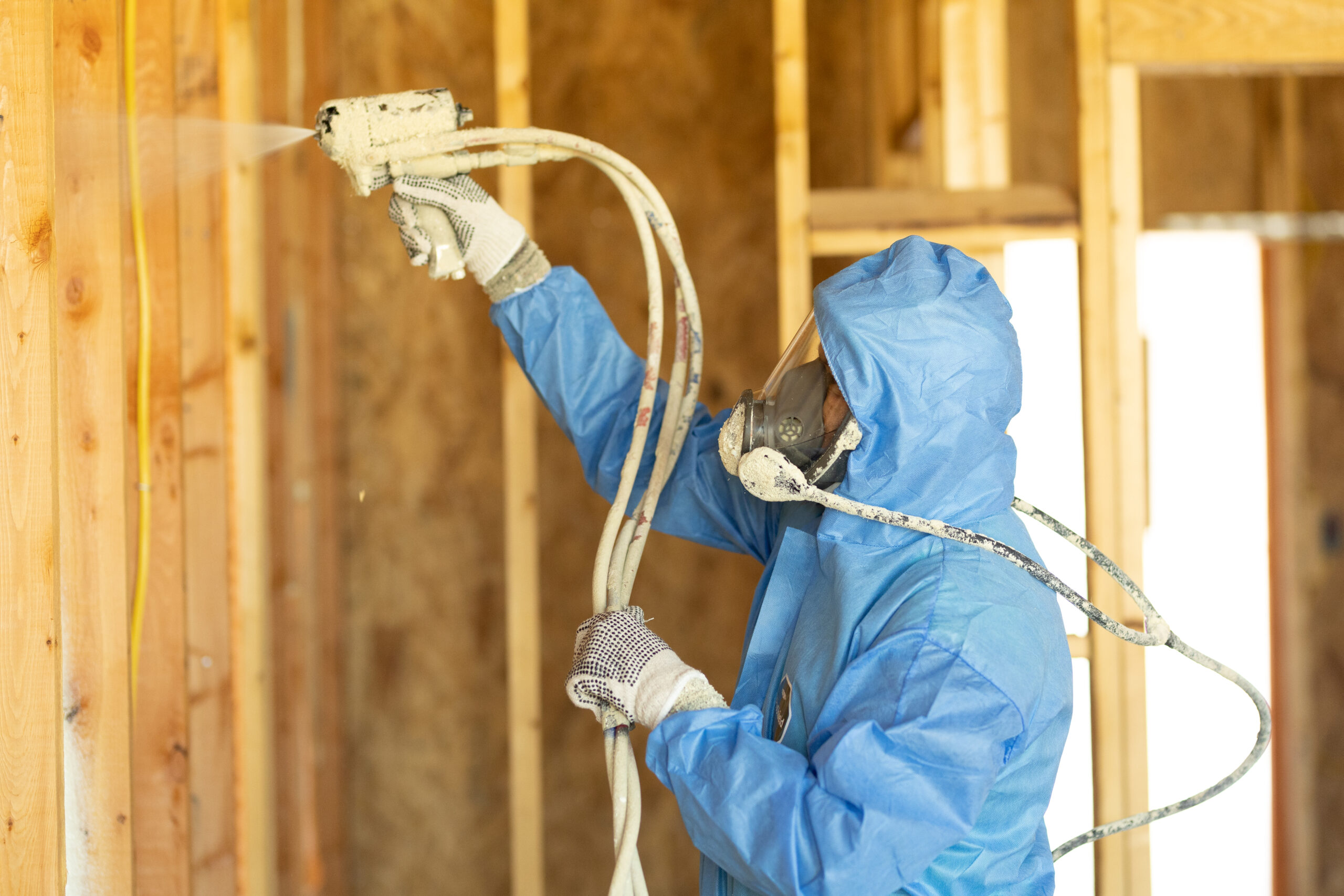The Environmental Impact of Spray Foam: Sustainability Considerations
The Environmental Impact of Spray Foam: Sustainability Considerations
Blog Article
Spray Foam: The Ultimate Service for Air Sealing and Insulation
Spray foam insulation has emerged as a leading solution for effective air securing and thermal insulation, using an one-of-a-kind mix of homes that establish it apart from standard methods. Comprehending the complete range of its advantages, setup processes, and comparisons with various other insulation types is important for making informed decisions.
What Is Spray Foam?
Spray foam is a functional insulation product that combines the concepts of air securing and thermal resistance to enhance power performance in buildings. Composed largely of polyurethane or various other similar substances, spray foam is applied as a fluid that increases upon call with surfaces, developing a strong, continuous layer of insulation. This one-of-a-kind property permits it to fill spaces, cracks, and spaces that conventional insulation materials may ignore, supplying a remarkable air seal.
There are two major sorts of spray foam: open-cell and closed-cell. Open-cell spray foam is lighter and extra flexible, using outstanding noise absorption and a lower R-value per inch - Spray Foam. On the other hand, closed-cell spray foam is denser, supplying a higher R-value, moisture resistance, and included structural integrity to building parts
The application process typically includes customized devices, ensuring a smooth application that complies with various substrates, consisting of steel, concrete, and wood. This adaptability makes spray foam appropriate for both brand-new buildings and retrofitting existing frameworks. Its ability to develop a closed barrier significantly contributes to reducing energy usage and boosting indoor air high quality, consequently making it a preferred option amongst contractors and home owners alike.
Advantages of Spray Foam Insulation
Among one of the most considerable advantages of spray foam insulation is its exceptional ability to create a constant air barrier, which successfully lessens power loss. Unlike standard insulation products, spray foam increases to load voids and splits, ensuring that air leak is dramatically lowered. This particular not just improves energy efficiency but also leads to lower energy costs gradually.
Furthermore, spray foam insulation supplies remarkable thermal resistance, adding to a much more stable indoor setting. Its high R-value per inch permits efficient insulation in restricted spaces, making it perfect for attics, wall surfaces, and crawl rooms. The moisture-resistant homes of spray foam help avoid mold and mildew and mildew development, advertising healthier living problems.
An additional important benefit of spray foam insulation is its sound-dampening top qualities (Spray Foam). It properly minimizes noise transmission in between rooms, developing a quieter and a lot more comfy home atmosphere. The sturdiness of spray foam also attracts attention, as it does not sag or settle gradually, maintaining its efficiency throughout its life expectancy
Just How Spray Foam Functions
Understanding just how spray foam insulation functions is vital for appreciating its efficiency in air sealing and thermal resistance. Spray foam insulation includes two main components: isocyanate and polyol resin. When these parts are mixed, they undertake a chemical reaction that triggers the product to expand quickly, developing a dense foam that loads splits, dental caries, and gaps.
As the foam increases, it sticks to surfaces, developing an impermeable seal that substantially lowers air infiltration. This particular makes spray foam insulation very reliable at avoiding drafts and dampness infiltration, which can lead to energy loss and damage in time. Furthermore, the closed-cell variation of spray foam uses superior thermal resistance because of its stiff framework, effectively lessening warmth transfer.
The one-of-a-kind properties of spray foam allow it to comply with uneven surface areas, making certain extensive protection and a seamless barrier. As a result, spray foam insulation not only enhances energy effectiveness however likewise adds to enhanced indoor air quality by reducing the buildup of irritants moved here and toxins. Eventually, understanding the mechanics behind spray foam emphasizes its function as a remarkable choice for insulation and air sealing in both industrial and domestic applications.
Setup Refine Summary

Before setup, the room must be effectively cleaned and prepped, making sure that surface areas are without particles, dust, and moisture. This step is essential since contaminants can jeopardize bond and total efficiency. When the location is prepared, the application includes blending the 2 parts of the spray foam, which expands upon contact and a fantastic read fills gaps effectively.
Trained professionals should conduct the installation, making use of specialized equipment to ensure uniform coverage and optimal density. Security safety measures, consisting of using protective gear and ensuring proper ventilation, are crucial during this process. After application, the foam generally remedies rapidly, forming a strong obstacle that improves energy efficiency.
Comparing Spray Foam to Typical Insulation
When reviewing insulation choices, spray foam insulation stands out in comparison to standard materials such as fiberglass and cellulose. Unlike fiberglass and cellulose, which can enable air infiltration, spray foam broadens upon application, filling holes and voids to create an impermeable seal.
Furthermore, spray foam provides a greater R-value per inch than conventional insulation kinds, offering even more efficient thermal resistance in a thinner account. This particular is particularly advantageous in spaces with limited cavity depth. Additionally, spray foam is immune to moisture and mold and mildew development, which can be a considerable worry about cellulose and fiberglass, especially in moist environments.
However, spray foam insulation usually brings a higher ahead of time price than its conventional counterparts. Home owners must weigh this preliminary financial investment versus long-lasting power financial savings and performance benefits. Eventually, while both insulation types serve their function, spray foam arises as an extra innovative solution for modern insulation needs, particularly in terms of air sealing and thermal effectiveness.

Conclusion
In summary, spray foam insulation stands for a very reliable remedy for accomplishing ideal air sealing and thermal resistance. Its distinct residential properties, consisting of wetness resistance and noise dampening, make it suitable for various applications in both brand-new building and constructions and retrofitting jobs (Spray Foam). The preliminary costs might be greater compared to typical insulation products, the long-term advantages, such as considerable energy financial savings and enhanced indoor air top quality, warrant the financial investment and underscore its worth in contemporary structure techniques.
Spray foam insulation has emerged as a leading solution for efficient air sealing and thermal insulation, providing an unique mix of residential or commercial properties that establish it apart from standard methods.Spray foam is a functional insulation material that combines the concepts of air securing and thermal resistance to boost energy performance in structures.When assessing insulation alternatives, spray foam insulation stands out in comparison to standard materials such as fiberglass and cellulose. Eventually, while both insulation kinds serve their purpose, spray foam arises as pop over to this site a more innovative service for modern insulation demands, especially in terms of air securing and thermal efficiency.
In summary, spray foam insulation represents an extremely effective service for accomplishing optimal air sealing and thermal resistance.
Report this page